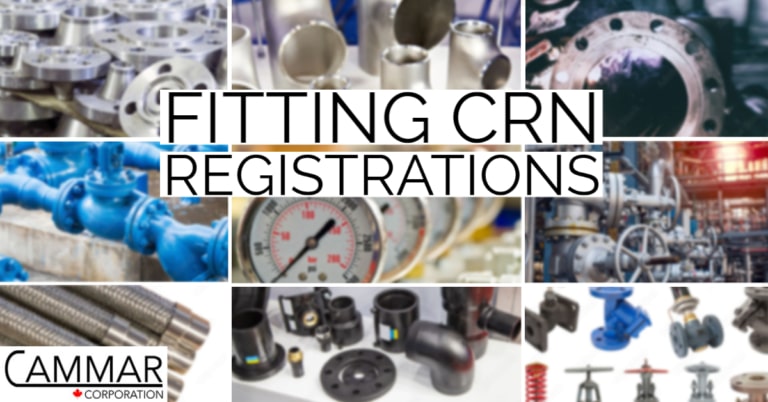Revisiting Maximum Allowable Working Pressure (MAWP) and Design Pressure (DP)
Contrary to the articles referenced below, it is a mystery how some seem to believe and even encourage others to think that the true design pressure of any vessel component, as defined in the code, is ever less than the MAWP of the vessel. It would necessarily suggest a potentially perilous situation.
Back in April of 2019, CAMMAR published an article entitled “MAWP is NEVER Greater than ASME Design Pressure,” and it generated lots of attention in the ASME pressure vessel and piping forum group on LinkedIn, with a surprising number of questions and discussion suggesting that the article was wrong.
Addressing those questions and comments is what this article about. It is worth re-emphasizing that the design pressure of vessel components as defined by ASME and per the previous CAMMAR article can never be less than the MAWP of the vessel provided that the vessel has one chamber (as almost all do).
For the Alberta regulator’s perspective on this matter, please see the following link (page 3) for their related publication: https://lnkd.in/gew4kRf.
The ABSA article discusses the dangers associated with suggesting that ‘design pressure’ is less than MAWP and that “‘Design pressure’ within the scope of the vessel code (as discussed therein) is thus required to be at least equal to the vessel’s MAWP, …” In order to register a vessel with a CRN number, the design pressure of each vessel component can never be less than the MAWP of the vessel.
Per the original CAMMAR article, MAWP and design pressure are not synonymous and, if mistakenly used interchangeably, the difference can compromise the safety of your equipment. When considered properly in the context of pressure equipment, MAWP is NEVER greater than design pressure.
Questions and misunderstandings of readers, which are apparently still evident, are previously answered and clarified as part of the discussion here, in the ASME pressure vessel and piping forum: https://lnkd.in/gb99dTB via LinkedIn. If you’re not a subscriber to that forum group, we suggest that you subscribe.
Here’s a sample of some of the questions/comments elicited, together with CAMMAR’s responses:
“MAWP is never greater than ASME DP.”
Reader A, in the USA
“MAWP can be Higher or lower; it depends on each component of our equipment. MAWP is the pressure which the weakest component of your system can handle.”
CAMMAR’s Engineering response:
In accordance with our explanations above and, at the risk of belabouring this issue but in the interest of public welfare, we maintain with good reason that MAWP is never greater than ASME DP, in accordance with code requirements, including the definition of DP via ASME Section VIII-1 paragraph UG-21, when considered properly with Appendix 3, and Appendix KK. MAWP is always less than or equal to the design pressure of vessel components. Design pressure (DP) as defined by the code relates to vessel components and is, therefore, a function of component location.
“The language of the code is not subject to preferences.”
Reader B, in the USA
“I agree with the content of the article. It encourages us to properly understand how MAWP, Design Pressure is defined in code. It cautions about a very specific case where assuming ” MAWP would always be greater than the design pressure” would be risky. I, however, do not agree with the title of the article. It is misleading. Please note the (*) mark against the article and do not accept the title at its face value. There is an interpretation in the code that does not agree with the title of the article (https://cstools.asme.org/Interpretation/InterpretationDetail.cfm) . It is my experience that sometimes ASME BPVC code rules are read differently in different parts of the world. They are preference based on Industry, past industry experience, local laws. All of those preferences even though different complies with the language of the code.”
CAMMAR’s Engineering response:
Referenced articles (including titles) above are consistent with code rules, definitions, and interpretations. Note that the interpretation you mention relates to initial design conditions, not final design conditions. It is a mystery how some seem to believe and even encourage others to think that the true design pressure of any vessel component, as defined in the code, is ever less than the MAWP of the vessel. It would necessarily suggest a potentially very dangerous situation. The language of the code as understood by regulators is not subject to preferences! Definitions of design pressure and MAWP are what they are. There is no law directing the use of any different definitions for design pressure or MAWP in Alberta; they are defined as what the ASME code already requires.
“DP is always greater than or equal to MAWP.”
Reader C, in Germany
“Cameron, you are wrong. MAWP can be greater than Design Pressure. Even on one vessel. When the actual wall is thicker than required, you can calculate a MAWP that exceeds the design pressure of the vessel.”
CAMMAR’s Engineering response:
Well [name removed to preserve anonymity], it seems that we disagree! But thanks for your response. It’s an important topic, hence my article. MAWP is, of course, the maximum pressure permissible at the top of the vessel. That said, some vessel components might well be overbuilt in relation to others but, in that case, the MAWP will not change. If properly defined, as noted in the article, DP is always greater than or equal to MAWP. Period.
Have questions about getting your CRN? Find out how we can help you register your pressure vessels in Alberta/Canada
More Information About about CRN numbers:
Please read our blog articles here.




